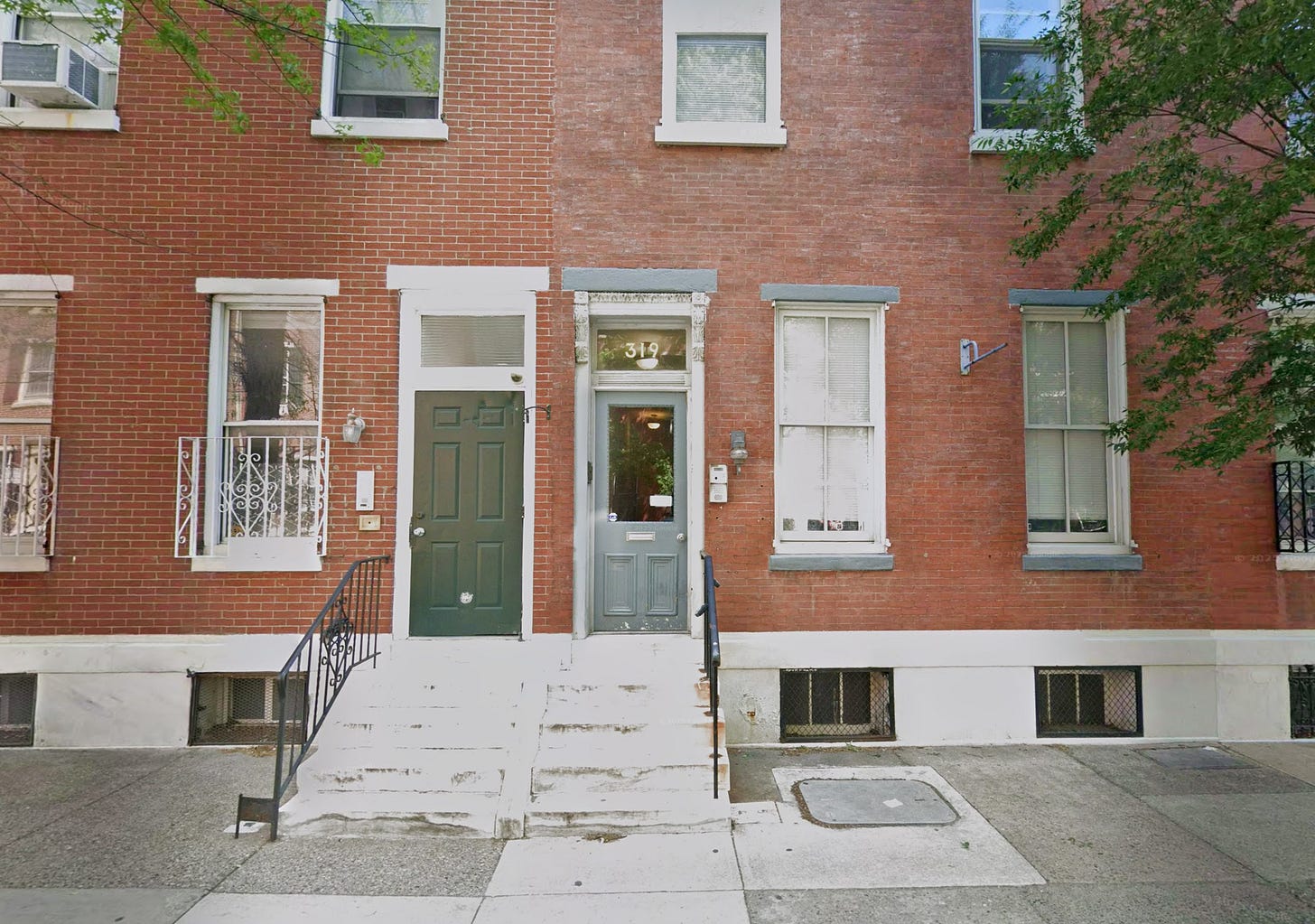This Rittenhouse Building Housed Seven Renters for Decades. Now It’s Finally Legal.
Zoning Board of Adjustment voted unanimously to legalize seven-unit building after years of informal use.

Reach 1 in 3 Fitler Square homes by sponsoring a future issue. Inquire here.
For more than two decades, a stately brick townhouse at 319 South 16th Street has quietly rented seven apartments to long-term tenants. No complaints. No code violations. Nothing that drew the city’s attention.
So why, after 24 calm years, did its owner and attorney go before the city’s zoning board to request a variance—essentially, permission for the building’s existing layout to be made legal?
The issue wasn’t safety or nuisance. It was zoning math.
On paper, city records still recognized the property as having four apartments and two offices, a relic of a 1959 variance that once permitted five dwellings and a doctor’s suite.
In reality, the building contained seven separate apartments. Because the property’s RM-1 zoning requires a minimum lot area per dwelling unit that the site doesn’t meet, those extra apartments were never technically legal.
To reconcile what existed with what was allowed, the owner needed the city’s approval to formalize all seven units.
A Common Story in Historic Neighborhoods
Attorney Oleg Sokolov, managing partner of RS Law Group, who oversaw the case, said the building’s situation is typical of older properties across Center City.
“A lot of the properties in historic neighborhoods like Fitler, Rittenhouse, and Society Hill were built for entirely different uses a hundred years ago,” he explained. “Over time, the market changed—people didn’t want 6,000-square-foot single-family houses anymore. They needed apartments.”
For decades, many of the grand 19th-century homes near Rittenhouse Square have adapted to a changing city—subdivided, repurposed, and redefined to meet Philadelphia’s modern housing needs. The stately brick townhouse at 319 South 16th Street is one of them.
A Building in Limbo
Maureen Horesh, who purchased the property in 2001, told the board she bought it as a functioning seven-unit building. “There were always seven units in the building—seven kitchens, seven bathrooms, seven studios,” she testified. “But my license read differently.”
She told the zoning committee that she discovered the inconsistency between the building’s physical layout and its zoning classification during her ownership, and chose to resolve it proactively by seeking a variance from the zoning board.
Making a Decades-Old Reality Official
At the October 1 zoning hearing, her attorney Gabriel Fellus argued that the building—just a few blocks from Rittenhouse Square—had operated for years without incident. The city’s records showed no recent code violations or neighbor complaints.
And in terms of density, Fellus said, it was consistent with nearby multifamily properties that had been granted similar variances.
The property’s RM-1 zoning permits multifamily housing but requires a larger lot area per dwelling unit than the site provides. That technicality meant the existing seven apartments needed formal approval to remain.
The Center City Residents Association, which hears local zoning matters before the citywide Zoning Board of Adjustment, voted not to oppose the request.
Horesh submitted a petition with 12 supporting signatures, several from her block. The Philadelphia City Planning Commission also recommended approval, noting that the additional units appeared to have been created by a previous owner without proper permits—likely many years ago.
Case Closed, Finally
After a brief round of questions, the Zoning Board voted unanimously to approve the variance. The decision clears the way for the property to be brought fully into compliance through the city’s permitting process.
For Horesh, the outcome ends a long period of uncertainty. “I’m just trying to make it right,” she said simply.
And now, after more than two decades, she can.

